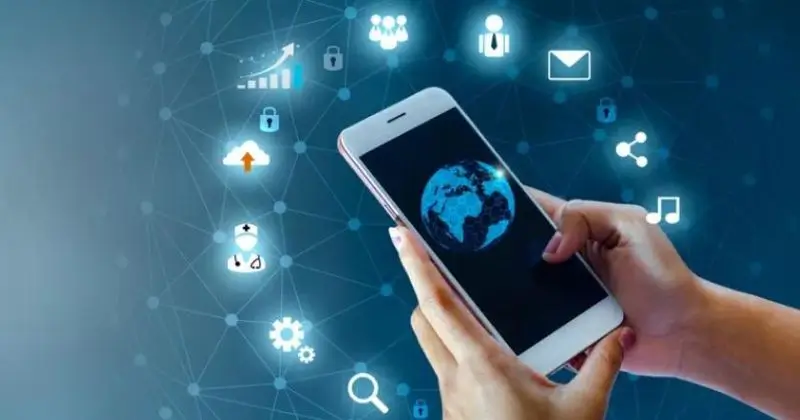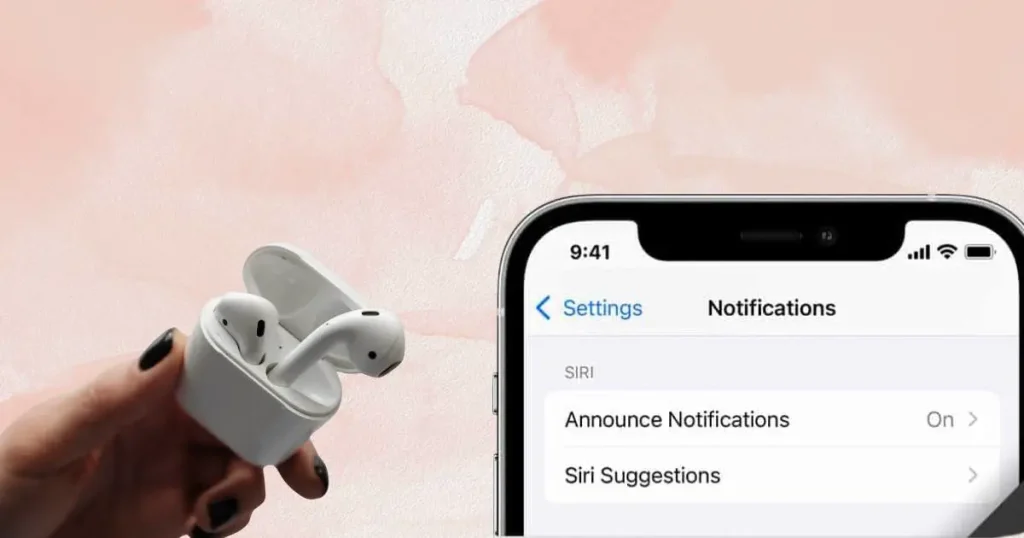Mobile data is the internet connection provided by your mobile phone network. It lets you access the internet on your smartphone, tablet, or other mobile devices without needing Wi-Fi. Think of mobile data as a magic bridge that connects your phone to the vast world of the internet, allowing you to browse websites, watch videos, play games, and use social media apps on the go.
The journey of mobile data began with simple text messages and phone calls. In the early 1990s, the first generation (1G) networks offered analog voice calls. Then came 2G in the mid-1990s, which introduced digital voice calls and SMS text messaging. The early 2000s saw the rise of 3G networks, which brought faster internet speeds and allowed us to browse the web, check emails, and use basic apps.
By the 2010s, 4G networks revolutionized mobile data with even faster speeds, enabling high-definition video streaming, online gaming, and advanced apps. Today, 5G networks are emerging, promising ultra-fast speeds, low latency, and the ability to connect many devices simultaneously.
In this article, we’ll explore the wonders of mobile data. You’ll learn what mobile data is, how it works, and the different types available, like 3G, 4G, and 5G. We’ll also discuss its benefits, challenges, and the future of mobile data. By the end, you’ll understand why mobile data is so important in our daily lives.
Table of Contents
What is Mobile Data?

Mobile data is the internet service that lets your phone access the web when you’re not connected to Wi-Fi. It uses the same signals that carry phone calls and text messages, but it’s designed specifically for internet use. This means you can check your email, use social media, or stream music and videos even when you’re out and about.
Mobile data works through a network of cell towers. These towers send and receive signals to and from your phone. When you use mobile data, your phone connects to the nearest tower, which then connects to the internet. It’s like a relay race, with each part passing the signal along until it reaches the web and brings the information back to your phone.
Types of Mobile Data
There are different types of mobile data networks, each offering varying speeds and capabilities:
- 3G: This was one of the first versions that allowed for faster internet browsing and video calls. It was a big step up from the earlier 2G network.
- 4G: This type of mobile data is much faster than 3G. It allows for high-definition video streaming, quicker downloads, and smoother online gaming. Most smartphones today use 4G.
- 5G: The newest and fastest type of mobile data, 5G offers lightning-fast internet speeds. It can handle more devices at once and supports new technologies like self-driving cars and virtual reality.
Each new generation of mobile data brings improvements in speed and reliability, making it easier and faster to stay connected on the go. For more details about the evolution of mobile networks, you can check out this guide on the history of mobile networks.
Differences in Speed, Coverage, and Reliability
- Speed: Each new generation is faster than the previous one. 5G can be up to 100 times faster than 4G, making it possible to download a movie in seconds.
- Coverage: As networks evolve, their coverage improves. 4G has better coverage than 3G, and 5G is designed to offer even broader and more reliable coverage, especially in urban areas.
- Reliability: Newer networks are also more reliable. 5G can handle more devices at once without slowing down, which means better performance during peak usage times.
The Dynamics of Mobile Data
To understand the dynamics of mobile data, let’s delve into its fundamental components:
Data Packages: Similar to a subscription model, mobile data is often provided in predefined packages by mobile service providers. These packages include a certain amount of data that users can utilize within a specified time frame.
Data Transmission: When you browse the internet, stream videos, or use online applications on your mobile device, data is transmitted between your device and the servers hosting the content. This transmission is facilitated by the cellular towers that form the backbone of mobile networks.
Data Speeds: The evolution from 3G to 4G and now 5G has brought about significant improvements in data speeds. 5G networks, with their astonishing speeds, promise to revolutionize the way we experience the internet on our mobile devices.
Navigating the Mobile Data Landscape
Imagine being in a new city, trying to find your way without a map. That’s akin to navigating the digital realm without a reliable source of mobile data. The GPS on your smartphone relies on a constant stream of data to provide real-time navigation, and this is just one of the many scenarios where mobile data comes into play.
Mobile Data in Everyday Scenarios
Streaming Entertainment: Whether you’re binge-watching your favorite series during your commute or enjoying a live sports event on your lunch break, mobile data ensures seamless streaming without interruptions.
Social Media Connectivity: From sharing moments on Instagram to scrolling through the latest updates on Twitter, our social media interactions are fueled by the connectivity provided by mobile data.
Productivity on the Go: As our professional lives become more mobile, cloud-based applications and services enable us to work from anywhere. Mobile data transforms our smartphones into portable offices, enhancing productivity on the go.
Anecdotes of Connectivity
To truly appreciate the impact of mobile data, let’s explore a couple of anecdotes that highlight its significance:
Lost and Found
Sarah, a traveler exploring a foreign city, found herself lost in the labyrinthine streets. Without a reliable internet connection, she couldn’t access maps or translation apps. The moment she regained mobile data, her smartphone transformed into a navigational compass, guiding her back to her hotel with ease.
Remote Work Revolution
Michael, a freelance graphic designer, relies on mobile data to showcase his portfolio, communicate with clients, and even participate in virtual meetings while on the move. The flexibility offered by mobile data has empowered him to embrace a nomadic work lifestyle.
Mobile Data: A Step-by-Step Guide
Step 1: Understanding Your Data Plan
Before delving into the world of mobile data, it’s crucial to comprehend your data plan. Check the data limits, understand any throttling conditions, and be aware of any additional charges for exceeding your allotted data.
Step 2: Monitoring Your Data Usage
Most smartphones offer tools to monitor your data usage. Regularly check these statistics to stay within your plan limits. This step prevents unexpected charges and ensures a seamless internet experience throughout the billing cycle.
Step 3: Optimizing Your Settings
Adjusting your device settings can significantly impact data consumption. Ensure that background apps are not consuming data unnecessarily and consider lowering video streaming quality when on a limited data plan.
Step 4: Exploring Data-Saving Apps
Numerous apps are designed to minimize data usage without compromising functionality. From browsers to media streaming apps, explore and utilize applications that prioritize efficiency.
The Future of Mobile Data: 5G Networks
As we stand at the cusp of a new era, the spotlight is on 5G networks. With promises of ultra-fast speeds, low latency, and the ability to connect an unprecedented number of devices simultaneously, 5G is poised to redefine the possibilities of mobile data.
5G Networks: A Quantum Leap
Speed Revolution: Imagine downloading a high-definition movie in mere seconds. 5G makes this a reality, pushing data speeds to unprecedented levels.
Internet of Things (IoT): The proliferation of connected devices, from smart homes to autonomous vehicles, will be seamlessly facilitated by the expansive capabilities of 5G networks.
Business Transformations: Industries will undergo a paradigm shift with the arrival of 5G, enabling real-time data analytics, augmented reality experiences, and revolutionary advancements in telemedicine.
Convincing the Skeptics: Why Mobile Data Matters
For the skeptics who question the necessity of mobile data, let’s address the elephant in the room. Why invest in a service that seems omnipresent but often goes unnoticed?
Mobile Data: A Lifeline of Connectivity
Unmatched Accessibility: While Wi-Fi provides connectivity within a limited range, mobile data ensures that you’re never without internet access, whether you’re in a remote location or in the heart of a bustling city.
Emergency Connectivity: In times of emergencies, when Wi-Fi networks may be unavailable, mobile data can be a lifeline. From contacting loved ones to accessing critical information, its importance becomes evident in unforeseen situations.
A Plethora of Possibilities with Mobile Data
Imagine a world without mobile data. The convenience of ordering a ride, the joy of sharing vacation photos instantly, and the reassurance of being connected in times of need—all these possibilities are made real by the wonders of mobile data.
Final Thoughts- Wonders of Mobile Data
In conclusion, mobile data is not just a service; it’s the lifeline of our connected existence. From everyday scenarios to revolutionary advancements, its impact is profound and pervasive. As we embrace the dawn of 5G networks, the future promises even more remarkable possibilities.
Frequently Asked Questions about Mobile Data
What exactly is mobile data, and how does it differ from Wi-Fi?
Mobile data refers to the transmission of digital information over cellular networks, allowing devices to access the internet without relying on a Wi-Fi connection. Unlike Wi-Fi, which has a limited range, mobile data provides internet connectivity on the go, facilitated by cellular towers.
How can I monitor and control my mobile data usage?
Most smartphones offer built-in tools to monitor data usage. Navigate to your device settings, find the data usage section, and set up alerts for approaching data limits. Additionally, you can manually track your usage and adjust settings, such as limiting background app data usage and reducing video streaming quality.
Are there ways to save on mobile data usage without sacrificing functionality?
Absolutely! Consider optimizing your device settings by disabling background data for certain apps. Additionally, explore data-saving apps for activities like browsing and streaming. Adjusting video streaming quality and downloading content for offline use are effective strategies to save on mobile data without compromising your experience.
What is the significance of 5G networks in the context of mobile data?
5G networks represent the next generation of mobile data connectivity, offering unprecedented speed, low latency, and the ability to connect a vast number of devices simultaneously. The introduction of 5G is poised to revolutionize various industries, from enhancing internet speed to enabling advancements in technologies like augmented reality and the Internet of Things (IoT).
Can I rely on mobile data in emergency situations?
Yes, mobile data can be a crucial lifeline in emergency situations. Unlike Wi-Fi, which may be unavailable, mobile data ensures internet connectivity, allowing you to contact loved ones, access critical information, and stay connected in times of need. It serves as an essential communication tool in unforeseen circumstances.
- 8 Top Benefits of Unified Communications - April 16, 2024
- EcoFlow Wave 2 Review: Wireless Portable AC with a Heater - February 6, 2024
- The Wonders of Paper Shoot Cameras: A Comprehensive Guide - December 23, 2023


